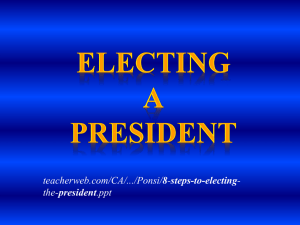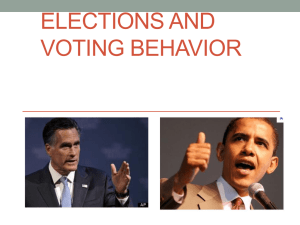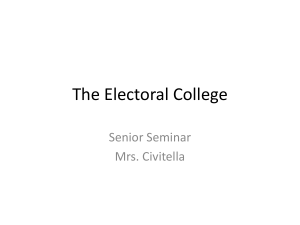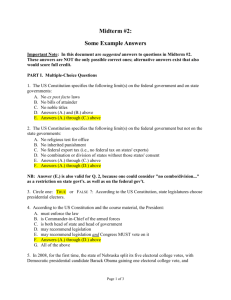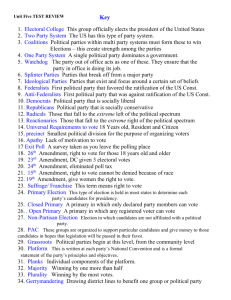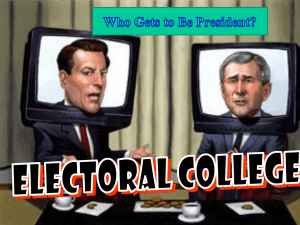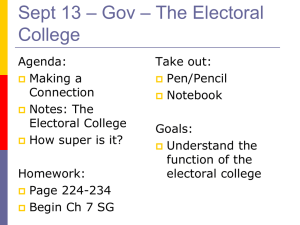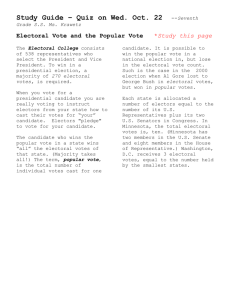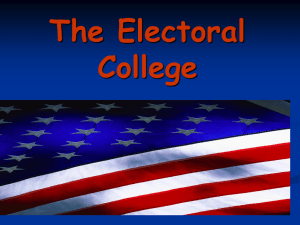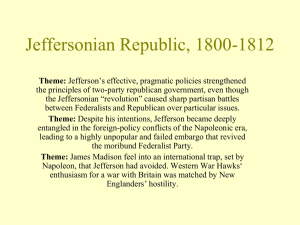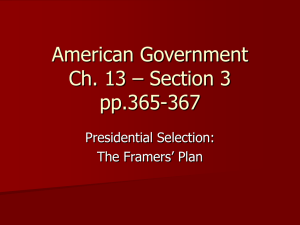Chapter 13 Section 5 pp. 377-384
advertisement
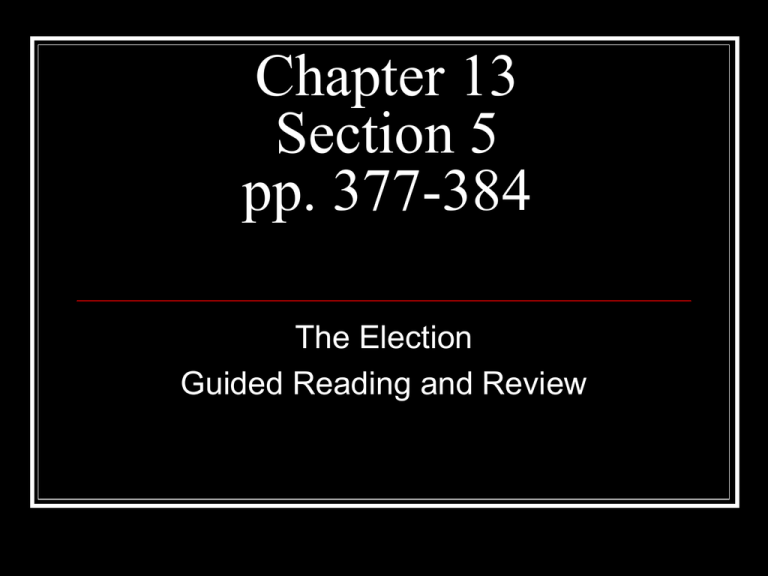
Chapter 13 Section 5 pp. 377-384 The Election Guided Reading and Review Electoral College - voters in each State vote for electors for a party’s presidential and V.P. candidates, and each State’s votes are awarded on a winner-take-all basis - The winner of the national popular vote may not win the electoral vote. Example of the flaw State #1 – 10 Electoral votes State #2 – 5 Electoral votes State #3 – 7 Electoral votes Popular votes for Candidate A - state #1 – 2,500 - state #2 – 2,000 - state #3 – 3,000 Popular votes for Candidate B - state #1 – 5,000 - state #2 – 1,000 - state #3 – 2,500 Electoral votes for: Candidate A – 12 Candidate B – 7 Popular vote – 7,500 Popular vote – 8,500 District Plan - Two electors would be chosen from each State at large and would cast their votes in accordance with the statewide popular vote. - The winner of the popular vote may not win the electoral vote. Proportional plan - candidates would receive the same % of a state’s electoral vote as they receive in the State’s popular vote - The election may not produce a clear winner, third parties would gain power Direct Popular Election - President and VP would be elected by popular vote – No electoral vote - requires a Constitutional amendment, would weaken federalism, small states would oppose it. National Bonus Plan - Electoral votes would be as they are now. A national poll of 102 electoral votes would be awarded automatically to the winner of the popular vote. - This plan is not well known or understood Winner of popular vote fails to win electoral vote for President 1824, 1876, 1888, 2000 Electorate - the mass of people who actually cast votes
